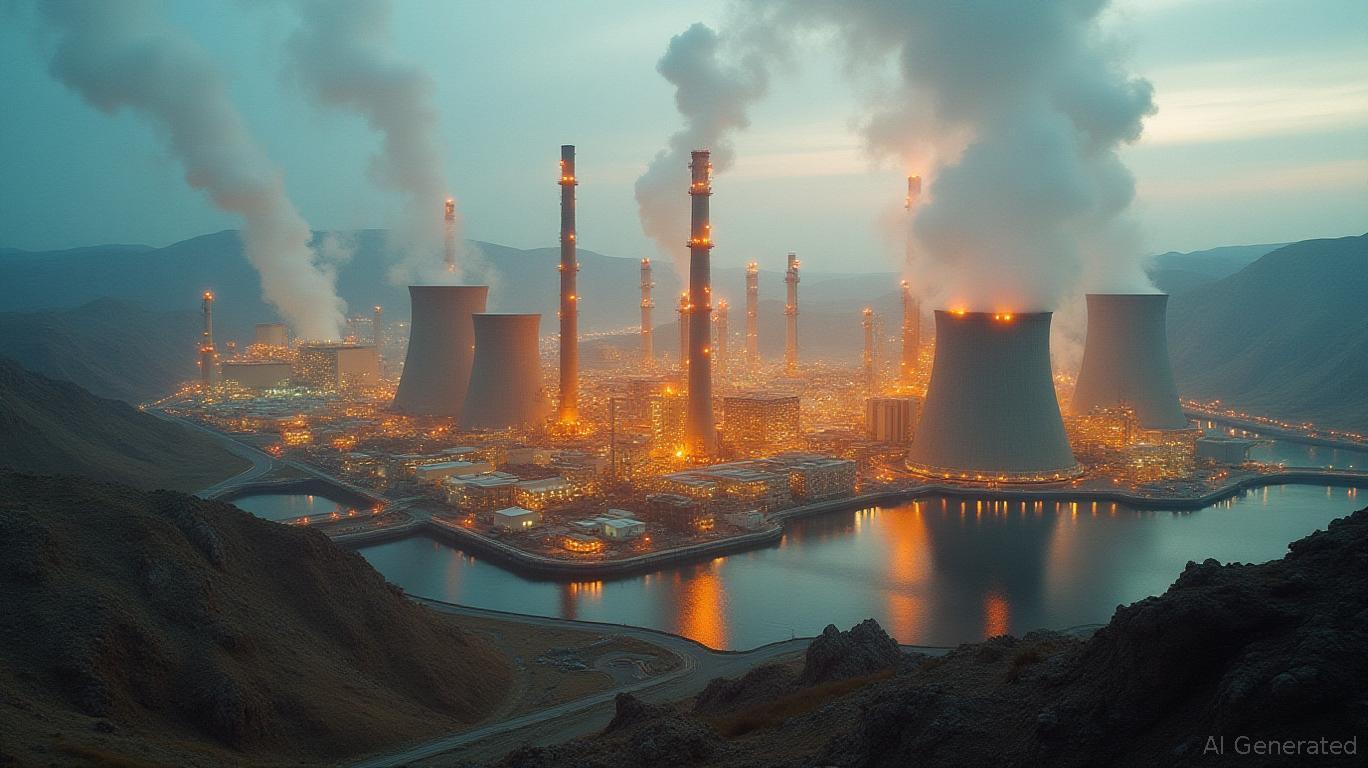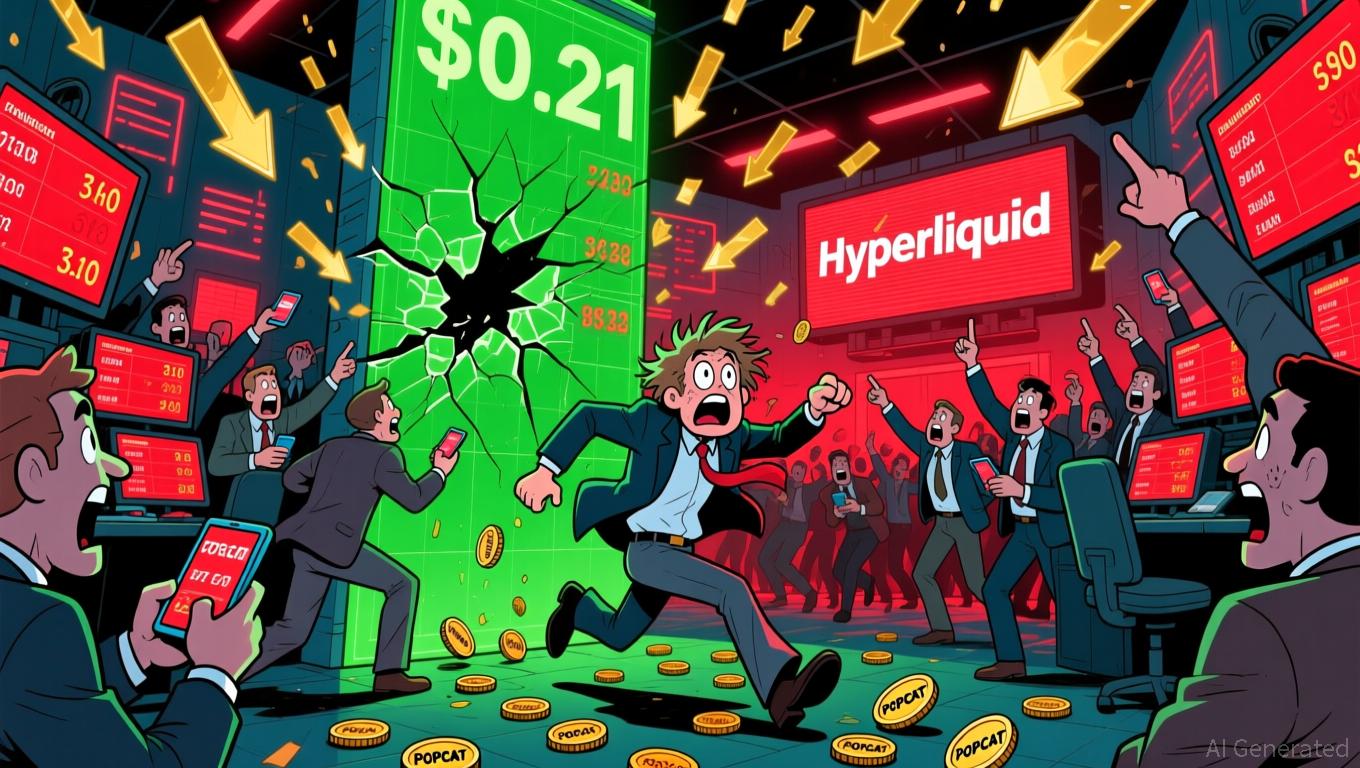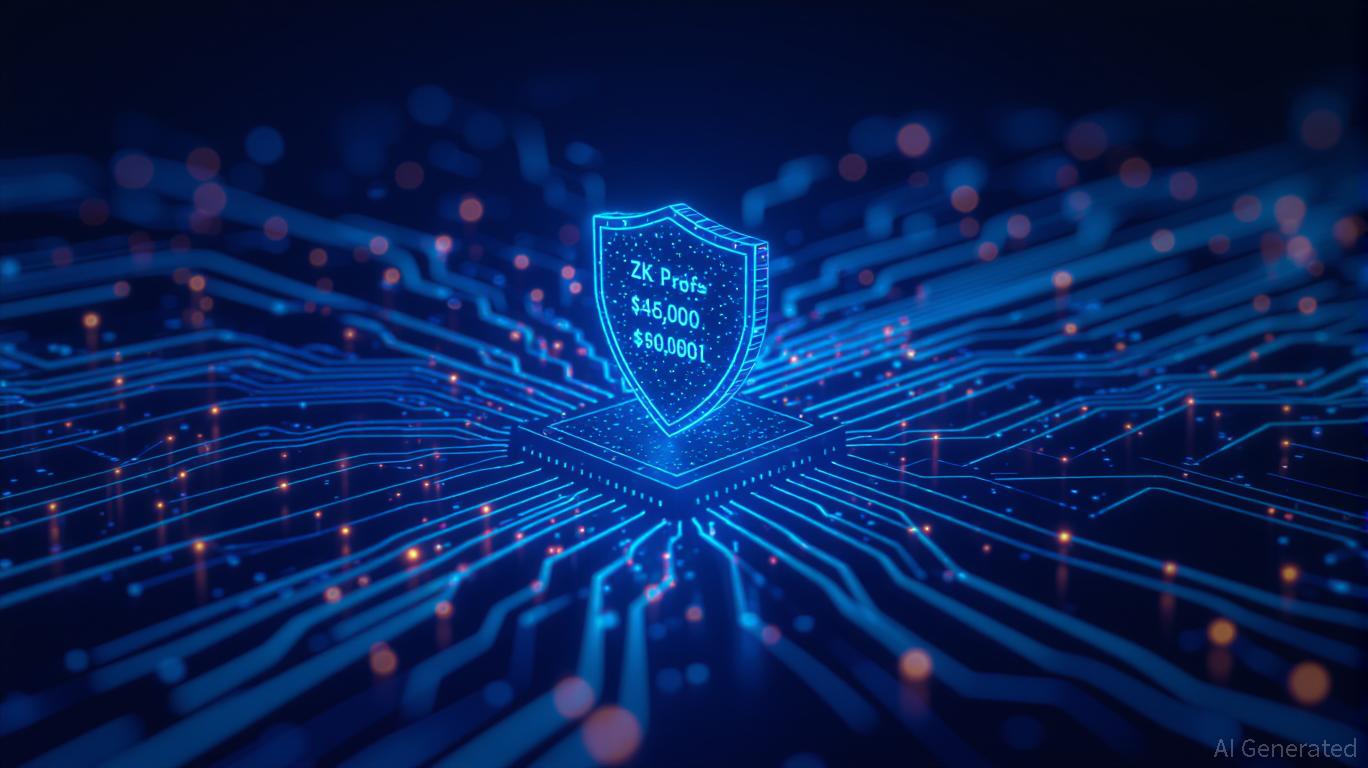Uranium Suppliers Strengthen Energy Stability During Worldwide Unrest
- enCore Energy and Verdera Energy advance uranium production plans to strengthen U.S. energy security amid global tensions. - enCore focuses on in-situ recovery (ISR) technology for sustainable uranium extraction at key U.S. sites like Alta Mesa and Dewey-Burdock. - Verdera secures $20M financing and completes a go-public transaction with POCML 7 Inc., though regulatory and market risks remain. - Both companies aim to reduce reliance on foreign uranium supplies by scaling domestic production amid rising n
The uranium sector is experiencing a resurgence as
enCore Energy, which prioritizes environmentally friendly nuclear fuel, manages several significant uranium operations throughout the United States, such as Alta Mesa, Dewey-Burdock, and Gas Hills. The company’s adoption of ISR—a process that extracts uranium from underground without traditional mining, thereby reducing environmental disruption—supports its pledge to sustainable energy, as mentioned in an

At the same time, Verdera Energy’s public listing with POCML 7 Inc. marks a key milestone in its expansion plans. This arrangement, which still requires approval from the TSX Venture Exchange (TSXV) and other regulatory steps, is designed to provide the capital needed to further develop its uranium assets in the U.S. The $20 million, raised through a brokered deal, will go toward exploration and project advancement. Nevertheless, investors should be aware that the outcome of the transaction is uncertain, and there is no assurance it will proceed as intended. The TSXV has not reviewed the deal’s merits, and the securities in question are not registered under U.S. law, restricting their sale to investors outside the United States.
The actions taken by both companies mirror a larger movement within the uranium market, where interest in nuclear power as a clean energy source is growing. enCore’s focus on U.S. production and Verdera’s fundraising efforts highlight the industry’s drive to decrease dependence on uranium imports, especially from regions with political instability. However, the sector faces significant obstacles. Verdera’s deal depends on regulatory clearance and market factors, while enCore must address the technical and environmental challenges of uranium mining.
These recent events also emphasize the importance of capital pool companies in helping new entrants access the uranium market. POCML 7 Inc., functioning as a shell entity, is facilitating Verdera’s move to go public—a common tactic in resource industries to avoid the complexities of a conventional IPO. Still, such deals are speculative by nature and come with risks related to possible delays and market fluctuations.
As the United States works to strengthen its energy systems, the uranium sector’s success in attracting investment and increasing production will be essential. For enCore and Verdera, the upcoming months will be crucial as they face regulatory, financial, and geopolitical challenges, as referenced in the enCore Energy brief.
Disclaimer: The content of this article solely reflects the author's opinion and does not represent the platform in any capacity. This article is not intended to serve as a reference for making investment decisions.
You may also like
Hyperliquid News Update: Significant Leverage, Limited Liquidity: POPCAT's $5 Million DeFi Breach
- Hyperliquid suffered a $4.9M loss after a trader manipulated Solana-based memecoin POPCAT through leveraged long positions and a sudden price crash. - The attacker used $3M in USDC from OKX to create a $20–30M leveraged position, inflating POPCAT’s price before triggering cascading liquidations. - Hyperliquid paused its Arbitrum bridge to stabilize the platform, highlighting vulnerabilities in DeFi’s automated liquidation systems and low-liquidity markets. - Experts warn such attacks expose DeFi risks, u

Vitalik Buterin's Advances in Zero-Knowledge Technology and the Prospects for Blockchain Scalability: An Investment Outlook for 2025
- Vitalik Buterin's GKR protocol breakthrough reduces ZK verification costs by 10-15x, enabling 43,000 TPS on ZKsync with near-zero fees. - ZK Layer 2 market grows at 60.7% CAGR to $90B by 2031, driven by Ethereum's "Lean Ethereum" optimizations and institutional adoption. - ZKsync, StarkNet, and Immutable lead DeFi/gaming expansion, but face regulatory risks (Zcash scrutiny) and technical barriers to mass adoption. - Investors must balance ZK's scalability potential with execution risks, regulatory uncert

Vitalik Buterin Supports ZKsync and the Advancement of Scalable Blockchain Technology
- Vitalik Buterin endorsed ZKsync's Atlas upgrade, boosting its market profile as Ethereum's scalability solution. - ZKsync now achieves 15,000 TPS, 1-second finality, and real-time Ethereum liquidity access, outperforming Layer-2 rivals. - The ZK token surged 50% post-endorsement, with growing institutional adoption and RWA integration as key drivers. - ZKsync's zero-knowledge proofs and decentralized governance model position it as a leader in secure, scalable blockchain infrastructure.

Bitcoin News Update: Clearer Regulations and Growing Institutional Interest Propel Crypto Market to $2.4 Trillion as Industry Evolves
- U.S. crypto market surges to $2.4T as institutional adoption, regulatory clarity, and macro optimism drive gains. - Bitcoin and Ethereum rebound post-government shutdown, with crypto-linked stocks like SBET and GLXY rising 3-5% pre-market. - Regulatory frameworks like CLARITY Act and Project Crypto aim to resolve ambiguity, boosting institutional confidence. - Analysts caution volatility risks despite ETF inflows and blockchain adoption milestones, urging diversified long-term strategies.